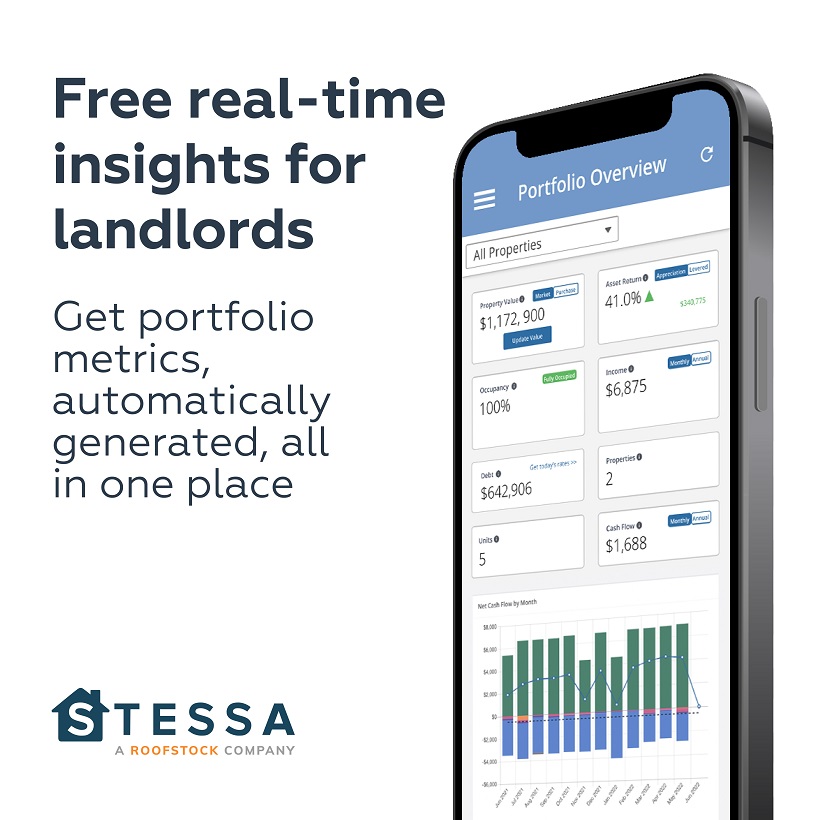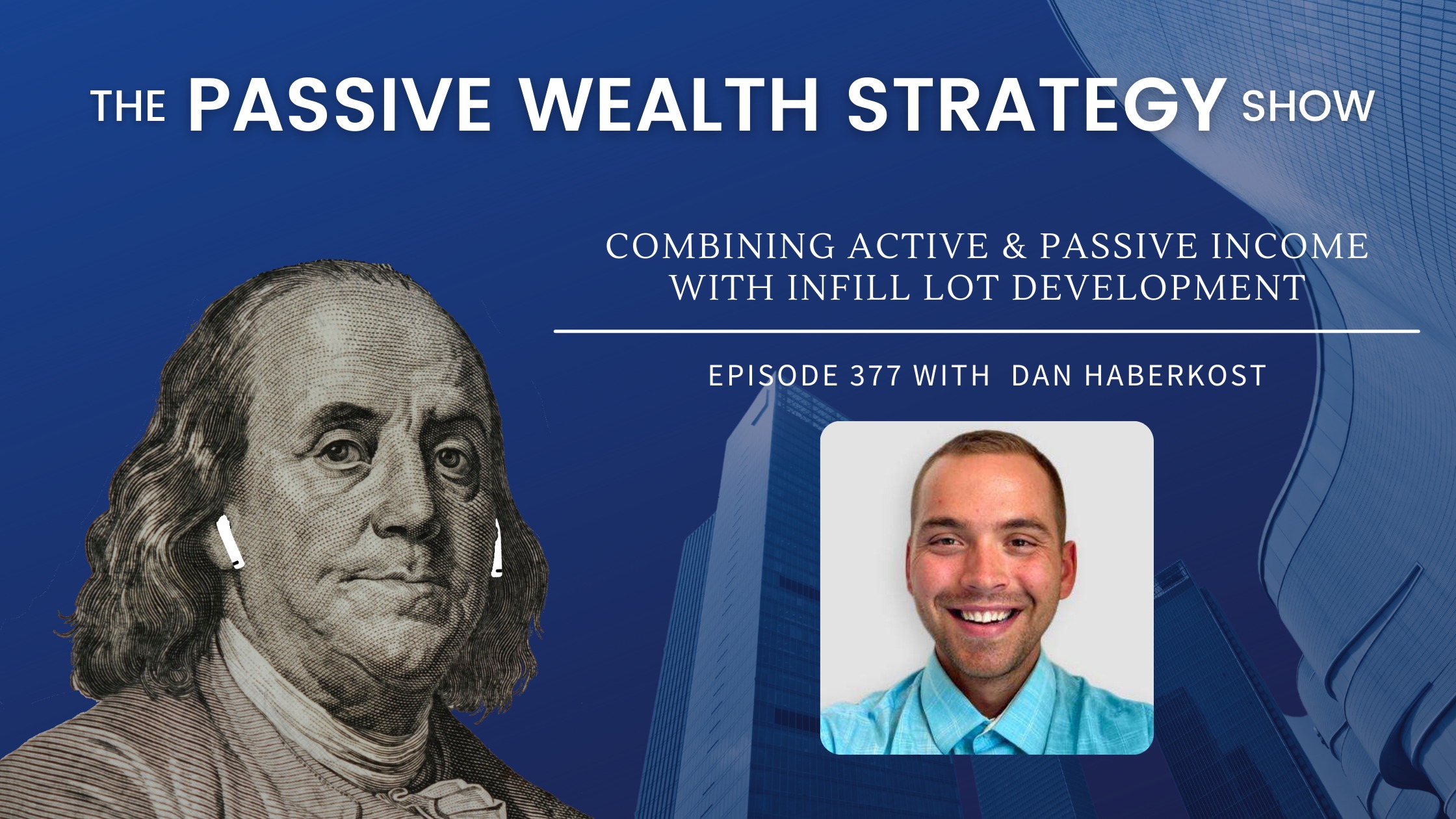
Combining Active & Passive Income with Infill Lot Development with Dan Haberkost
Dan, thank you for joining us today.
Thanks for having me, Taylor, excited to share a bit with your audience.
I’m looking forward to learning about what you have to say and your experience and all of that for our listeners out there who don’t know about you and your business. Can you tell us about your background and how you invest in real estate?
Sure. I live in Colorado Springs and am originally from Ohio. And as of today, I have an active business, which is the Front Range Land. And really, I think the easiest way to describe that is if you think of a wholesaling business that’s centered around marketing to get off-market deals of houses or apartments, my business gets off-market deals at 30 to 50 cents on the dollar for land.
And then what we do with that land ranges between. Building houses on it, simply closing on it and flipping on it, or selling it on a note. So that’s the active business and it’s really just an assembly line of leads bringing me land at a huge discount. And then that active business feeds the passive business, which is simply investing in rentals, which are all residential up to this point.
And the two are very synergistic because of the passive. Obviously reduces the tax burden on the active and then the active feeds the passive as far as just having capital for it because real estate investing is a cash-intensive venture. Now that sounds very well thought out in hindsight, but it would not, it was not that thought out as I have been building it over the years.
So we can talk about that. But yeah, I bought my first rental property when I was 21 in college and it’s grown from there slowly and steadily.
That’s great. That’s great. I think a lot of our listeners, even those who are busy professionals can relate to that, right? Because they’ve got their job that provides active income and they may be looking to build a passive income on the side through rentals or other strategies.
And real quick, I wanted to dive into the land side of the business because especially right now properties that are already existing are ridiculously expensive. And many people, myself included have been thinking, Hey, maybe I’ll buy some land and build something on it. And that will be my method for buying a new primary residence or getting a rental going or whatever you can tell us about the changes in the landmark that you’ve seen, especially throughout.
Yeah. So there’s a lot there. I’m trying to bookmark each point. I want to make, let’s take a step back on a high level and look at the big picture. And as far as land goes I want to make a distinction between what I’m working with versus what a lot of people are. I have focused almost entirely on infill lots.
And what do I mean by that? Take one of the primary markets on building in Pueblo, west in the seventies, the same developer that did lake Havasu in Arizona, for anyone who’s familiar with that follow the army Corps of engineers, to where they were damming up the Colorado River and creating reservoirs.
And he was buying huge tracks around it and subdividing. So he. The thousands of acres that were there around the reservoir, he did all the work that was involved in planting it, bringing in utilities, getting it to the point where you have, that pretty zoning pitcher with the different zoning and the roads, or excuse me, the, all the lines and so on and so forth.
He did all of that upfront work, leaving you with 20,000 or 20 some thousand infill lots. Shovel-ready right. Entitlements are done. Utilities are. You don’t have to do anything further to the land in order to develop it. So that is the type of land I’ve been working with, which makes the whole process substantially easier.
Another way that some people approach the land is they go after raw land where none of that has been done. And if you want to build on it at a minimum, you’re going to have to do a well and aseptic or potentially extend utility lines. At most you might have to do quite a bit more as far as. Dealing with the city and getting different approvals and zoning.
There’s a lot that goes into it. I’m not going to have a detailed discussion on it, but I think it’s important to be clear that I’ve been working with the infill lots because there’s tech, and there are millions of dollars that have already been invested in the land, making it very easy. So to answer your question, I really wouldn’t recommend anything.
Pursues building something unless they really want to make a business out of it. Cause doing the first one is the hardest part. Granted, if we’re talking about just the passion project of building your dream home for you and your family. Sure. Go ahead and figure it out. Build a house. But if not, if we’re talking about building rentals, getting the right contract.
Learning the process, and putting the pieces and parts in place to do it is the hardest part. And then once it’s set up building simple houses, this is fairly passive. If you’ve set it up properly and you’re dealing with infill lots. So that was a lot there, but I wanted to make that distinction because a lot of people don’t understand the difference between the raw land and a piece of land that’s developed.
It’s just an infill lot.
I certainly appreciate you drawing that distinction and really as a general comment, any aspect of real estate investing, at least that I have found always has a niche within a niche, you’re really niching down into your aspects. So can you tell me? Your specific strategy when it comes to investing infill lots.
Yeah. So got the marketing machine set up that I talked about. I started with mail, but I know people that have been successful texting or cold calling. So I don’t think with marketing in general, it’s that one strategy is the best. I think it’s consistently over long periods of time with a single strategy or a couple of strategies.
So important caveat
there. So comment on that, the calls and the texts are really fricking annoying how the mail is much appreciated. I’ll take the mail. Any guy, please continue.
Yeah. Yeah. We’re getting a lot of calls lately, specifically from a wholesalers employee who I know they don’t, they haven’t taken me off the stupid list, but anyways so once you have that.
I’ve got a couple of markets I’ve targeted here in Colorado that is on the path of progress. And because I want to build, it’s really important that you understand where the market is. As far as is it like Denver where it’s a mature market that’s largely built out and more people are just doing scrapes where they’re knocking down old buildings or is it.
In Colorado, it’s really just the path of progress that goes right down the front range down at 25. Is it somewhere way down south where just nothing’s going on? I don’t want to beat either of those markets. I want to be somewhere in the middle where the market is starting to get built out, but it’s not a mature market like Denver.
So that’s really important. All the markets I’m in, they’re all secondary or tertiary markets of the major metros that have grown. So for example, here in Colorado Springs, as we were talking about. Five years. It’s really blown up here. The market has matured. A lot of people have moved. Businesses have moved in.
It’s gotten very expensive. So people are getting pushed out to some of the markets further down I 25 and that’s where I’m building. So those markets were very sleepy four or five, six years ago. Now they’re starting to get built out. So they’re prime for development. When I get all these leads for lots at a discount, I have many exit strategies because it’s growing, I could build on it myself, or I could sell it to one of the other developers.
I know a lot of developers or builders don’t know anything about investing. So they buy lots at 90, 95 cents on the dollar. They have no idea how to buy at a discount. Yeah, it’s really crazy. Or I could close on it, be listed on the market, and get that moment. And users who are buying a lot for themselves to build on.
So knowing where your market is at is really important. If I tried to do this here in Colorado Springs, it’s feasible, but my cost per lead would be astronomical. There’s just so much competition up here cause it’s a far more mature market and there just isn’t a lot of infills, lots left. You’d really have to go out east way out east towards the airport.
Timing is important. So I have a build that’ll close here, hopefully, this week, maybe next week. And that. It’s even further down south, but an hour and a half from Colorado Springs. And three years ago, when I started down there, all I was doing was buying and selling lots. Nobody was building, but there was a little bit of activity on the land.
So it was very easy to buy at 10 or 20 cents on the dollar, but a little harder to sell now, or let’s rewind about a year ago, I got to lead down there and I was driving through, and all of a sudden. Foundations popping up you a dozen foundations and there’s a couple of builders down there. And of course, I called them up, chatted with them and they’re all, pre-sold every single one of them pre-sold let go.
Wow. There’s demand down here because it’s gotten so expensive up north. And so I started building there last year and consistently building there because the timing made sense. I stopped just buying and selling land. It’s a lot harder to get a discount there than it was two years ago, but now I can build, and there’s a substantial margin.
You have to understand where the markets at and in your market where the path of progress is. So it’s very simple here in Colorado. We have mountains on the way west side, right? So the main artery, the main highway I 25 and then out east, it’s very rural. So sure the cities expand out east, but they tend to go straight down.
I-25 straight down the highway. Another example is a buddy of mine who is in Texas and he was trying to figure out where to look for his land business. I said, Just looking at the map. I don’t know, Texas, but the major highways between the big cities like Austin and Dallas, or, that sort of thing. So looking ahead and understanding where your market is and how it’s growing or where it’s growing will help you determine where this sort of business makes sense.
Cause again, if I try and go to Los Angeles and mail for infill lots, it’s not going to work very well. So where the market’s at in, in being built out as important.
Nice. Yeah, I can imagine that. Going along the mountains. If I was going to move to Colorado or want to be in Colorado, I want to be able to see some mountains.
I don’t want to be all the way out east in the Plains, but that’s just me.
Yeah. No, and that’s most people,
so yeah. Yeah. Being part of Colorado. Learning how to develop a property is a whole other, subset or knowledge category that you had to, build, to get involved with that part of the process.
So how did you take those steps to start getting involved there?
Yeah, so that goes back to when I first moved here at the local real estate group that I actually host now, I didn’t at the time there was a guy who stood up at the end of one of the meetings and goes up and in real estate for 40 years, I’ve built all over the world storage unit.
Commercial buildings, single-family, everything you could imagine. He goes, I need help in my business. And in return, I’m happy to, teach someone who wants to learn. And of course, everyone gathered around him and everyone got his number and only two people called him me and one other. Yeah.
Yeah. And he lived about an hour south, but it was very clear to me. He knew what I wanted to know. So I went down there every weekend. We worked together learned from him, we developed just a friendship over time. And he’s the one who really taught me about building houses or building anything really.
Cause it’s quite simple once you know how to do it. I remember he told me that building single-family homes are child’s play. And at the time that was so intimidating to me. But in hindsight, he’s absolutely right. It’s very simple. Now for anyone who’s new. That was a bit of learning from a firehose cause he had so much experience and was showing me so many different strategies and moves in different markets all over the country.
It was a bit much and I got a little bit of shiny object syndrome, but he is originally and really who has taught me how to build houses, and more than anything, the key to doing it is finding the right people, finding the right contractor, who. Once the build is in process, just take it and run with it.
So if you set this up properly, just for building simple specs, I don’t do anything past having bought the land, got the plans and engineering done builder gets the permit. He, I don’t have any idea who the subs are. He builds it out. I just finance it. So if you do this right, it can be fairly passive. And again, this is.
The major macro trends right now make a lot of sense for new development. I think I read were five over 5 million residential units short in the country, and then specifically living somewhere where a lot of people are moving and where there’s a lot of vacant lands. That’s already been subdivided and utilities are there.
It just works. It just works.
So absolutely. It’s no. Magical equation. There’s no magical reason why the cost of real estate goes up in a lot of cities that have massive amounts of people moving there. It’s a shortage of real estate or developed real estate and significantly more demand.
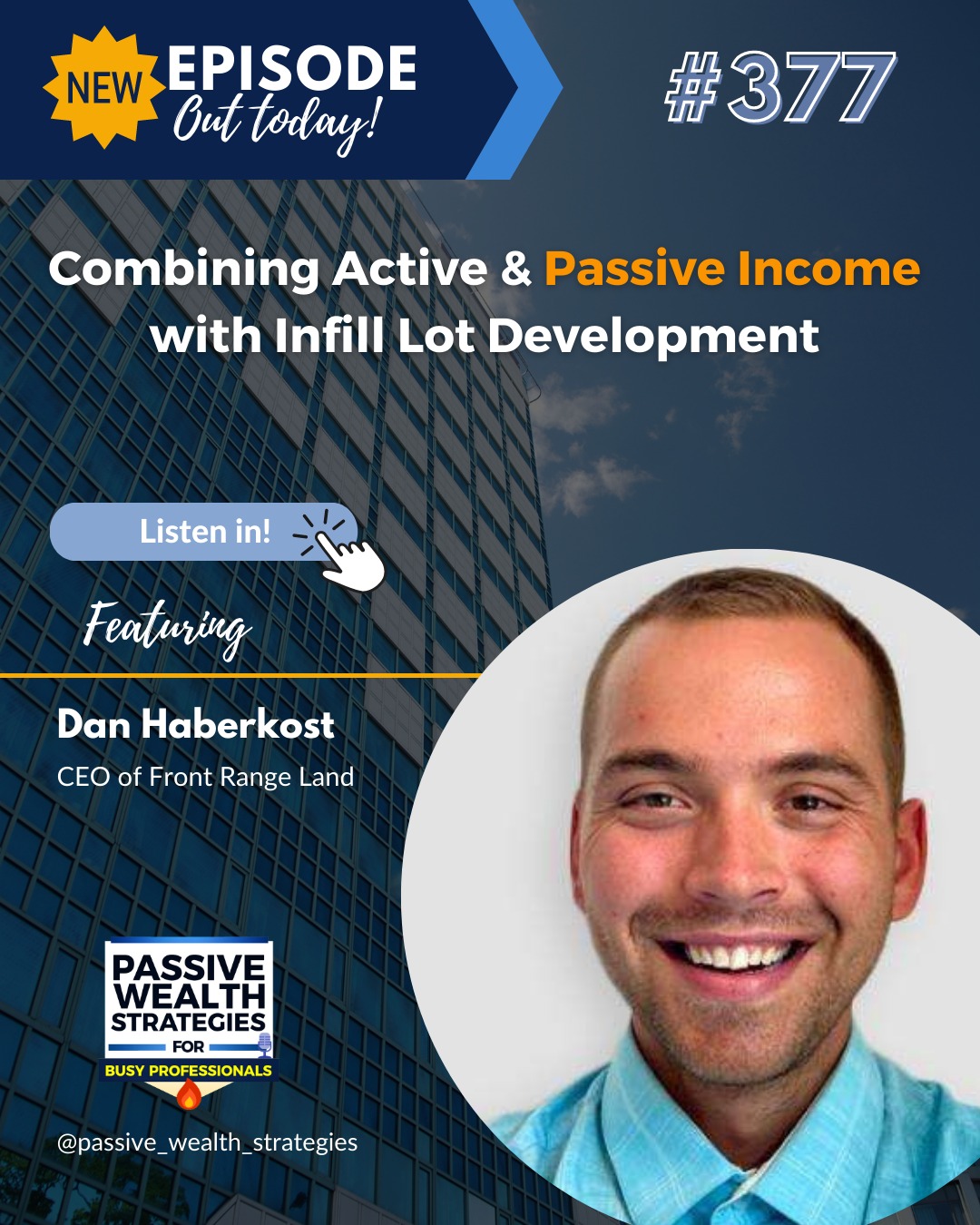
Combining Active & Passive Income with Infill Lot Development with Dan Haberkost
And that forces prices upward. That’s just how supply and demand work now. How do you mention that people are always super important? So I certainly appreciate that note. How do you do? Vetting, especially of a contractor upfront to know that, Hey, this guy’s not going to walk away from a half-built foundation.
And, just leave me with a pile of sticks on the ground or something like that. How do you do that upfront? So you don’t find it out the hard way on the backend.
Yeah. And I have had some bad experiences with contractors who did not work out, thankfully worked through those. But in hindsight, I would say there are a couple of things.
Number one, I want them to be referred by someone I know. That’s number one, but that’s only part of it. Number two, I want to see if someone refers them and says, oh yeah, they were great. A few years ago. That’s not enough. It needs to, I want to see projects they’re doing right now that are moving smoothly and whoever they’re doing them for is happy about it.
And then just looking online to in the modern-day. Do they have negative reviews? Are there problems online that you’re finding that help a lot too, but if you can see them successfully building, if you have good referrals from people you trust, and then the last thing, and this goes to screening tenants or hiring employees?
Yeah, just the little things, when you’re getting to know the person, do they do the things they tell you they’re going to do when they say they’re going to do them? That is so important. So one of the first things I’ll always do is I’ll send them the plan. I’ll send them the breakdown, a cost I’m currently using, I’ll say, oh, okay, Taylor, Feasible, what are your costs?
What is your cost breakdown look like? And if they tell me they’re going to have it to me Monday morning and they don’t right there, that is a huge red flag unless something dramatic happened. Just little things like that really mean a lot just from experience. I’ve found that if someone’s word does not mean much to them or their commitments don’t mean much to them, they’re going to be problematic when you go to do business with them.
So those three things. If you can see them successfully building projects, good reviews from people, and trust whoever is doing the projects with them currently, then they’re reliable and do what they say they’re going to do upfront. Part of getting to know them. That’s a fairly good sign right there.
Nice, nice. I appreciate that. And that those filters are gonna probably weed. 99 out of a hundred of them, bad guys, the bad guys. Yeah. Yeah. Nice. Okay, cool. I’d also like to dig into this topic of how you’re combining your active income with your passive income, because we’ve talked about the land and did the development think, some of our listeners may relate to that, may be interested in that, but I think.
The thing they’re going to be most interested in is how, this, the system that you came around to combining your active and passive income. So let’s dig into that and how you think about it.
I bought my first rental, as I was saying when I was 21 and I didn’t at the time I just worked a normal job, it didn’t have a substantial income. I made 50 K plus some bonuses at the time. And it became clear to me really quickly that was in Ohio, moved to Colorado, bought another house hack out here. So I had two properties at the time. With all the things that can go wrong with the vacancy and, roof sewers, et cetera.
And just the down payments, it was clear to me, Hey, I need to figure out how to scale my income in order to scale a rental portfolio. That was very clear very quickly. And so it’s not necessarily that they’re combined. It’s just that they’re synergistic because when you have, a business over here spinning off a substantial amount of extra cash every month, it’s a lot easier to capitalize when deals do come up.
And then at the same time, Investing over here, shelters, the active income. So you don’t have to pay a substantial amount of taxes if you do it. If you really plan, you can pay no taxes legally for a long time. So that’s what I mean by them being synergistic. There is the passive income via notes from the land business, but I see those more.
They’re just an annuity. They do run out, it’s not an appreciating asset, although those are nice. Those are very nice.
But you did have to do the work to get those in the first place. They still fall under that heading of active income, as you’ve alluded to here, There’s obviously, I think clearly a lot of planning that goes into this, right?
Because, in order to invest, you have to have money left over. And I think you also make a great point that maybe we don’t talk about enough is that it’s easier to have more to invest if you just really focus on earning more money in the first place.
That helps a lot. Yes. Yes. I’m glad you said that because something that drives me nuts over and over again on podcasts. It’s just as leverage, and sure. If the last couple of years is what the rest of the forever is going to look like then great. That would make sense. But the paradigm we’re currently in is not going to last forever and is probably one of the most common characteristics of investors.
I know who. Weathered recession after the recession is they were very careful and a lot of them had several or a portion of the portfolio paid off. So I don’t like this focus on just pulling every dollar out of every property you possibly can when, especially with. You contrast that with, there are so many ways to scale your income within the real estate with other businesses, but even just within real estate, it’s very much exponential the same principles I’m applying to really both the investing and the land business are applicable to multimillion-dollar commercial properties.
I’m watching friends of mine do it right now. One of my buddies gonna make a quarter-million-dollar assignment fee next week on assigning a commercial property. And then. Yeah. That’s what I love about real estate is it’s exponential, right? You don’t have to make a hundred K and then make 120 it’s. Okay.
I made a hundred go make a million. That’s very reasonable. Very intentional about what you’re doing. So to your original point, yes I haven’t touched any of the equity in any of my properties. I don’t want to, I can go and make millions of dollars as opposed to leveraging up to my eyeballs.
And then if I have a far less leveraged portfolio, I’ll sleep better at night.
Nice. That leads to a point that I wanted to bring up, especially, in your business where you’re doing new developments is there’s this idea. That at the end of every real estate market cycle, the developers are the ones left holding the bag to really lose their money and lose their shirts.
We saw that in a great recession to an extreme degree. Do you think that way and how do you prepare for that? It, could you let us into your thoughts regarding leverage, more generally how you think about getting ready for market downturns because it’ll happen eventually. We don’t know when. But it will.
Yes. So that’s, I like that question. And I think a lot about this cause really I think success in the long-term is more about moderate gains while mitigating total loss. Especially if you think of the way an ex exponential curve progresses, as long as it doesn’t zero out. But to answer your question, there are a couple of thoughts there.
Number one, the product I’m building is a simple three bed, two. 1500 square foot house. I almost see it as a commodity because it appeals to the two major demographics right now for home. For the first time, millennial homebuyers, the millennials that were allegedly never going to buy houses are buying houses.
And then especially here in my market, because it’s close to some of the military bases like Fort Carson, where it’s just tons of young millennials, first-time home buyers. And then it also appeals to the downsizing baby boomer, the empty nester who doesn’t need it. Five beds anymore. The 3000 square foot house.
Cause all their kids are gone. They want something simple, and affordable. And so that demographic right now, there is such a lack of product for them. I really have a hard time imagining any way that it would go, the demand would go away completely, or that the price would drop so much that I couldn’t at least get rid of it.
So as a corollary, another reason for this word. Because I have the land business setup. My basis is really low. I’m buying the land cheaply. Every aspect of this is what I’m doing, I’m paying less than almost everyone else. So if my total basis on a house is right around two 40 for a three 80 sales price. And then, of course, you got to take out the realtor fees and the closing costs, but those don’t become to fruition until you sell.
That gives me a lot of wiggle room. If something.
Or I feel that I’m mitigating risk, building a simple level product. I’m not building a mansion. And then there’s just a massive spread allowing for more margin.
Okay. I just want to take note that I did we did lose connection there briefly while you were talking, I don’t know if you noticed that.
So hopefully we can w we should hopefully be able to edit the audio together, but there will be possibly a missing chunk in there. So I want to recap really what you’re saying is that I lost you right after you mentioned it. If you have a two 40 cost basis in a property, and you think you can exit in a normal market for three years.
Mine has realtor fees, minus closing costs and all of that. Can you just pick us up from there and then we’ll move forward. I don’t want to lose any of this information.
Yeah, very simply. If we see the market tanking, there’s a huge reduction in price. We can take it there to just offload it and get our cash out.
That’s the point, right? Just with anything the lower you buy it, the less risky. So those are the couple of ways I see a building being very safe, right. Building that simple palatable product to the masses, and then just having a large margin.
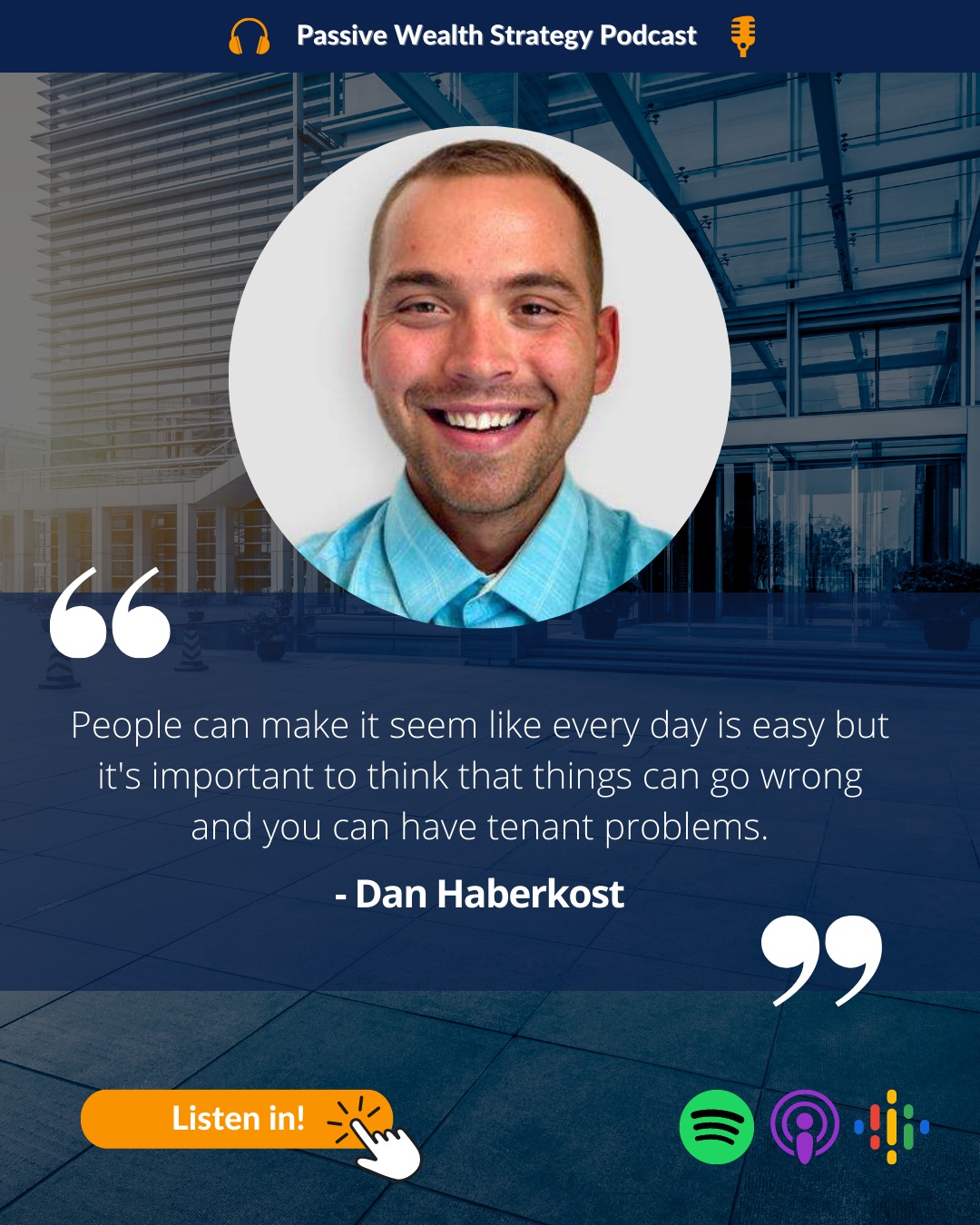
People can make it seem like every day is easy but it's important to think that things can go wrong and you can have tenant problems.
Dan Haberkost Tweet
Yeah. You could deal with a pretty significant drop-in.
Market price until you start to look at potentially losing money as compared to just breaking even. And Hey, oh but do you like to see another day in that case? Exactly. Exactly. Yeah. Okay. Okay. I appreciate that. And I’m glad that there are folks that yourself and others out there adding to the supply because that’s what so many markets my market and, the Denver area and all these others desperately need is new supply.
And I hate to say it, red tape out there preventing so much new development that I’m glad you’re out there. Pushing that forward right now. We’re going to take a quick break for our spot. All right, Dan, I’ve got three questions. I ask every guest on the show. Are you ready? Yeah, let’s do it.
Great. First one. What is the best investment you ever made other than in your education?
I’ve got to say it was the first house hack I bought here in Colorado and it exemplifies a couple of points. I want to drive home. It was a split-level four-bed, three-bath, a 1970s-built house. And. And it sucked.
I hated having I’m serious. I hate having roommates. I get woken up all the time. I didn’t like sharing things but having it eliminated all of my living expenses and it paid for my food and my gas. Okay. This is in 2018. That is so substantial. And it allowed me to leave my job, and get my active business going.
And as much as I hated it, it doesn’t matter because of today. 25 and I have control over what I do and where I go. And it’s because of those decisions. So delayed gratification is so important and I think that investment exemplifies it. That’s one of my best Reynolds. Now it’s in a great area of town.
It’s worth almost half a million dollars and it cashflows 12 or 1300 bucks a month. Yeah. Yeah, so that I think is my best investment because it was so essential and allowed me to leave that last job and get the active business going and just take the risks because my living expenses were covered.
Nice. I like that.
I like that. So we had the best investment. Now we go to the other side of that coin, the worst investment. What is the worst investment you ever made?
The first duplex I bought, I still own it today and it’s okay now, but I did everything wrong from the realtor to let the tenant that was existing, giving me their security deposits is the last month’s rent to just everything about that.
I did wrong. I didn’t run my numbers. Correct. Cause, I don’t have analysis paralysis. I would be on the opposite end of the spectrum where I jump into things too quickly, which I think you’ll hear over and over again from a lot of entrepreneurs. And that first buy was an example of that. I lost money on that for the first couple of years.
I’m not sure how much it ended up being total. I’d have to pull up old returns and spreadsheets, but the point being, I lost money on that for the first couple of years and mess up the property manager, but it taught me a lot of lessons. Didn’t make me go bankrupt and I’m better for it today. And now it does cash flow and it’s.
Digging itself out of that hole. Again, doing a little bit more due diligence is what I would recommend in hindsight, especially with the property manager, take those same recommendations for screening a general contractor, ply them under the property manager, apply them to your realtor and never take a security deposit as last month’s rent from a tenant 21-year-old, he thought that was acceptable.
Anyways. I’m still glad I did it because I made these mistakes on a $134,000 duplex as opposed to, a $400,000 house out here. And I learned and move forward. And yeah, I lost money on that for a few years, but it doesn’t really matter in hindsight.
Nice. And the lesson that you learned is so much more valuable, so you get to take that forward.
But my favorite question here at the end of the show is what is the most important lesson you’ve learned in business and investing.
Yeah. So that’s a great question. I hate cliches. So I’ll say you why, but to put it more specifically, Things are going to go wrong and we talk on podcasts. It sometimes makes it sound like every day is very easy and it’s not you’re going to get kicked in the teeth like we’re talking about, you’re gonna have tenant problems.
You’re gonna have issues with the government, depending on what you’re doing, things are gonna go wrong. And the only way that you’re going to continue to get up and deal with it is if you have a strong enough motivator. To deal with it. And so you need to be really clear on why you’re doing this because if you’re not, you’re just gonna, you’re going to quit.
You’re going to give up and you’re not gonna do what you need to do to build a business. The only reason that I finally left my job a couple of years ago and started the active business was simply that I hated that job more than any I’d ever hate. So I was in a horrible place and it took strong emotional drivers to go out there and build something.
Figure out why you’re doing this and then pick one strategy that aligns with what you’re trying to accomplish. And don’t veer from that until you’re successful. That’s the other mistake. It’s easy to make shiny object syndrome. You can make millions of dollars with apartments, houses, land, whatever you want.
Pick one, stick with it. Don’t vary from it until you’re successful.
Totally relate to that. It took me a very long time to learn the shiny object syndrome lesson, and really focus on what I do. And once I did that, things started really gaining steam. And what do you know, the focus helps. So I love all of those lessons.
And Dan, thank you for joining us today. If folks want to reach out, if they want to get in touch, if they want to learn more about what you’re up to or anything like that, where can they track?
Yeah, just Dan Hebert costs on social Facebook or Instagram. And then I created just a website, Dan hypercross.com, which goes through a lot of.
Awesome. Great. Thank you once again for joining us today to everybody up there. Thank you for tuning in. If you’re enjoying the show, please leave us a rating and review on apple podcast. Five stars. If you don’t mind, guys, I appreciate that so much that helps other people learn about the show, because that helps us rank higher in the apple podcast ecosystem.
And I’m always honest with you guys that gives me a nice little warm and fuzzy feeling because I get to see that you’re engaging with the content and you’re escaping the wall street casino. With us. If you know anyone who could use a little bit more passive wealth in their lives, please share the show with them and bring them into the tribe.
Don’t forget to subscribe and catch us here every Monday, Tuesday, and Thursday. I hope you have a great rest of your day and we’ll talk to you on the next one. Bye-bye.

Combining Active & Passive Income with Infill Lot Development
About our Guest
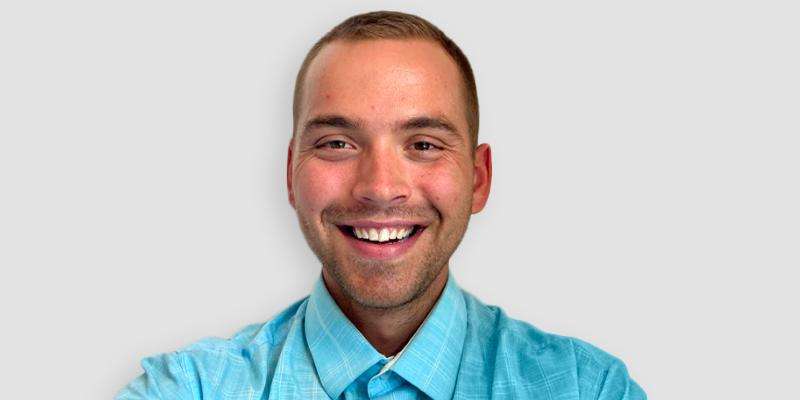
Dan Haberkost
Dan Haberkost is an entrepreneur, investor, and land developer. Because of the financial impact of real estate investing, Dan left traditional employment at 23 and he now has the freedom to work on what he wants without being tied to any sort of job. Within the real estate world, Dan is currently working on a mixture of new development, land investing, wholesaling and he’s always on the lookout for property that makes sense as a long term buy & hold.
Dan Haberkost is the CEO of Front Range Land. At the age of 25, Dan Haberkost has managed to build an impressive real estate business & portfolio that allows him the freedom to live & work where he wants while spending a tremendous amount of time in the mountains and on the beach.
Episode Show Notes
Dan Haberkost is an entrepreneur, investor, and land developer. Because of the financial impact of real estate investing, Dan left traditional employment at 23 and he now has the freedom to work on what he wants without being tied to any sort of job. Within the real estate world, Dan is currently working on a mixture of new development, land investing and wholesaling and he’s always on the lookout for a property that makes sense as a long-term buy & hold.
Dan Haberkost is the CEO of Front Range Land. At the age of 25, Dan Haberkost has managed to build an impressive real estate business & portfolio that allows him the freedom to live & work where he wants while spending a tremendous amount of time in the mountains and on the beach.
[00:01 – 04:19] Opening Segment
- Get to know Dan Haberkost
- Dan talks about how his active business feeds his passive business
[04:20 – 14:42] Infill Lot Development
- Let’s talk about land
- Land that Dan is working on versus land others are working on
- The difference between raw land and a piece of land that’s developed
- Strategies in Investing in Infill Lots
- Dan shares his experience in learning the process of developing properties
[14:43 – 23:46] Combining Active & Passive Income
- There’s no magical reason why the cost of real estate goes up in a lot of cities that have massive amounts of people moving
- Dan’s Top 3 Criteria in Finding His Contractors
- How to Combine Your Passive and Active Income
[23:47 – 31:22] Closing Segment
- Quick break for our sponsors
- The first step to growing your wealth is tracking your wealth, income spending and everything else about your finances, you can start tracking your wealth for free and get six free months of wealth advisor. Learn more about Personal Capital at www.escapingwallstreet.com
- What is the best investment you’ve ever made other than your education?
- House hack in Colorado
- Dan’s worst investment
- His first duplex
- What is the most important lesson that you’ve learned in business and investing?
- “Your ‘WHY’.”
Connect with Dan Haberkost through Facebook and Instagram. Visit his website https://danhaberkost.com/.
Invest passively in multiple commercial real estate assets such as apartments, self storage, medical facilities, hotels and more through https://www.passivewealthstrategy.com/crowdstreet/
Participate directly in real estate investment loans on a fractional basis. Go to www.passivewealthstrategy.com/groundfloor/ and get ready to invest on your own terms.
Join our Passive Investor Club for access to passive commercial real estate investment opportunities.
LEAVE A REVIEW + help someone who wants to explode their business growth by sharing this episode or click here to listen to our previous episodes
Tweetable Quotes:
“Real estate investing is a cash-intensive venture.” – Dan Haberkost
“I really wouldn’t recommend anyone to pursue building something unless they really want to make a business out of it.” – Dan Haberkost
“Success in the long term is more about moderate gains while mitigating total loss. ” – Dan Haberkost





